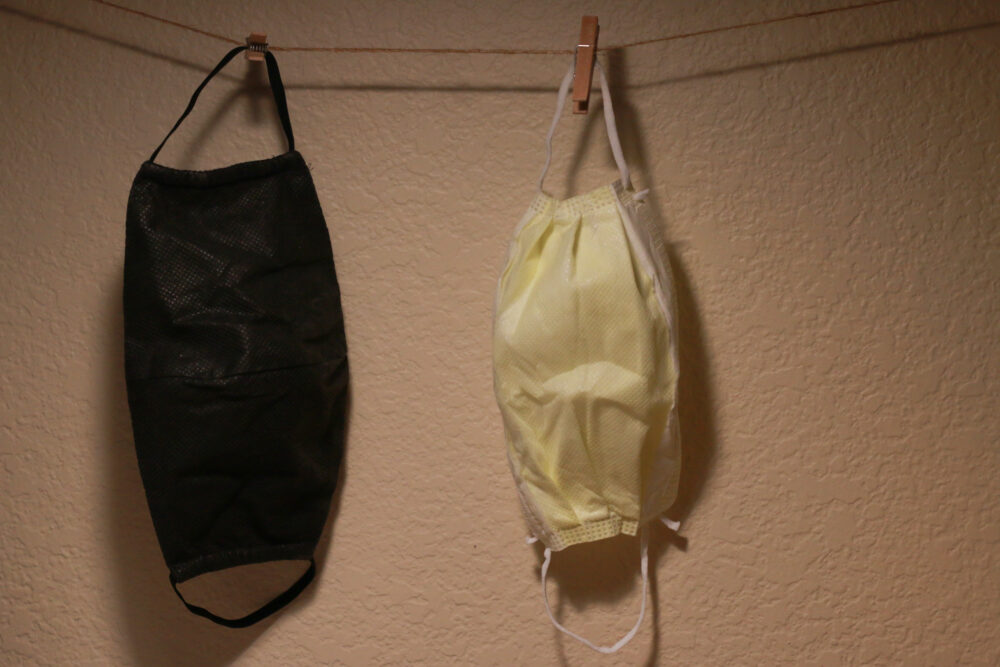
By Katy Nguyen
Wearing masks has transformed daily life and dramatically divided society over the past seven months of the COVID-19 pandemic. While citizens in some countries willingly and happily put on masks, residents in other countries, including the United States, have engaged in protests over refusals to put on masks.
The politically-charged resistance Americans have against wearing masks is nothing short of unnecessary. In a country that leads in COVID-19 cases worldwide, it is imperative that we diligently wear masks to slow the spread of the disease.
In January, the Centers for Disease Control and Prevention (CDC) had no recommendations for wearing masks. From March to April, the policies continued to change rapidly, causing people to question whether recommendations were accurate.
But even as mask-wearing policies change as health agencies and scientists discover new information, some politicians have continued to mock the practice and even gone further to shame those who are wearing them. United States President Donald Trump, for example, has refused to encourage mask wearing or pass legislation for it, and rarely wears masks in public himself.
The skepticism Americans have for health agencies paired with politicians touting health guidance and science has led to not only major public debates over wearing masks but also widespread misinformation about wearing masks.
Here are some common myths about wearing masks and some information on how you can protect yourself and those around you:
Masks don’t actually help prevent COVID-19.
- Research proves masks are essential and effective in reducing the spread of COVID-19 because they act as a barrier to prevent respiratory droplets from spreading. Not only that, mask-wearing displays empathy and a common awareness of public safety during a global pandemic.
Masks restrict breathing and cause carbon dioxide poisoning/reduce oxygen.
- The World Health Organization (WHO) conducted test and released official statements to prove that this myth is false. Masks do not lower blood oxygen levels and cause hypoxia, nor do they make you retain more carbon dioxide and cause carbon dioxide poisoning. Gas molecules, which are much smaller than respiratory droplets, are able to pass through masks.
Sunlight kills the virus, and you don’t need to wear a mask outdoors.
- There is not enough information to conclude that sunlight or heat do kill COVID-19. Outdoor spaces may have less human to human contact; however, it is always important to wear a mask as you may not know who is asymptomatic or if you are asymptomatic yourself.
If you don’t have symptoms, you don’t need to wear a mask
- Many individuals may be asymptomatic, but that doesn’t mean they can spread the virus to others unknowingly. An asymptomatic person could infect someone who returns home to high-risk family members.
Children don’t need to wear a mask.
- All children above the age of two should wear a mask per CDC guidance. It is important to engage children in proper sanitary and health habits. No child is completely immune to the virus and may also be asymptomatic carriers.
The CDC recommends looking for a two-layer fabric when making your own masks at home and to not wear a mask with a valve. All masks should cover your nose and mouth.
The different types of masks include
- Professional respirators: These include the N-95, which are reserved for medical professionals to use in high-risk settings.
- Procedural or surgical: These masks are also in critical supply and should be reserved for medical usage as well. They are disposable and provide protection against large respiratory droplets.
- Cloth or paper: These masks are often reusable/washable and are recommended for public usage to slow the spread of the virus.
Reusable/washable face masks should be sanitized correctly. The CDC has released these mask-washing recommendations. Face shields are not currently recommended to replace masks entirely but may be used in conjunction with masks.
It’s important to continue to follow public health guidelines in order to help prevent the spread of COVID-19, and to be informed by reliable resources and check with local authorities about the ongoing situation.
The California Department of Public Health requires masks in public settings and areas of high risk. Read the full guidance here.
For more mythbusters and COVID-19 information, visit the WHO here.
If you’re experiencing symptoms of COVID-19, there are many testing locations in Orange County that you can contact in advance and visit. Always remember to practicing social distancing at a minimum of six feet apart, avoid contact with sick people, wash your hands for 20 seconds with soap and wear your mask.





